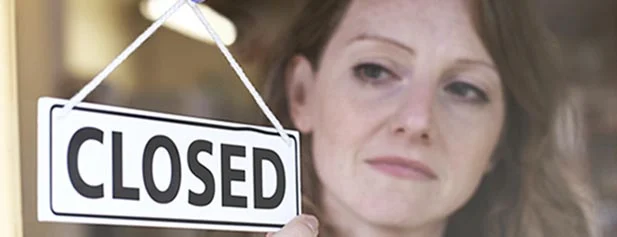Will Updates to the PPP Provide Any Small Business Debt Relief?

BySara Korn
UpdatedDec 16, 2025
- The PPP program ended in 2021.
Table of Contents
The Paycheck Protection Program Flexibility Act of 2020, a bill to extend and improve the Paycheck Protection Program (PPP), was signed into law last week.
The original PPP was created as part of the CARES Act to provide funds for small businesses to keep their workers on payroll and cover overhead costs during the shelter-in-place period that kept many businesses closed from March through May. Now that it’s clear that many businesses won’t be able to return to full operations for several months, the PPP is being extended to run through the end of the year and updated to fix problems with the original law.
What hasn’t changed
The updated PPP is still intended to provide small business debt relief by forgiving SBA loans that are used for specific purposes — payroll, rent, mortgage, utilities, and interest on debt — during the coronavirus economic crisis. In other words, a business would not have to pay back the loan funds if they qualify under the terms of the program.
What has changed
Here’s what business owners need to know about the new PPP and how it compares to the previous version.
Covered period extended
The amount of time that borrowers have to spend the funds on qualifying expenses is now increased until the end of the year or 24 weeks from the date of the loan’s origination – whichever comes first. This is a significant increase compared to the 8-week/June 30 period on the original PPP.
Loan will NOT be forgiven unless 60% spent on payroll
If you’re counting on not having to pay back the loan, then it’s important to make sure you spend 60% of the loan amount on payroll costs. That’s 60% of the total loan amount you’re approved for, not of the amount you spend. For example, if you borrow $100,000 but only spend $50,000 on payroll (50%) and don’t use the remaining $50,000, your loan would not be eligible for forgiveness.
Non-payroll costs covered at a higher rate
Instead of limiting non-payroll costs (i.e., mortgage, rent, utilities, interest) to 25% of the loan, borrowers can now use up to 40% on non-payroll costs. However, as noted above, it’s important that the other 60% be spent on payroll, or the entire loan may not be forgivable.
Some overhead costs now forgivable
Four months’ worth of mortgage interest, rent, and utility costs — up to 40% of the loan amount — are now eligible for forgiveness. Any amount over that would need to be paid back after the deferment period ends.
Repayment period extended to 5 years
Although most businesses hope to have the full loan amount forgiven, if there is any amount remaining that doesn’t qualify for forgiveness, businesses will now have five years instead of two years to pay back the loan.
Payments deferred until forgiveness amount is known
Instead of a fixed payment-deferral period of six months, under the new plan a business won’t have to make any loan payments until the SBA informs the business how much of their loan will be forgiven, and how much must be repaid.
More time allowed to replace jobs and restore wages
One of the most important limitations to understand is that the loan won’t be eligible for forgiveness if the business reduces their number of full-time employees and/or significantly reduces the wages of employees compared to the first quarter of 2020. However, businesses are given a time period during which they can restore pay to furloughed employees and fill full-time roles to bring employment and pay back up to early 2020 levels. The new PPP extends the restoration period from June 30 to December 31, 2020.
Extra relief for businesses that can’t reopen
For businesses that are unable to restore jobs due to government regulations requiring them to remain closed or limited in service, the new PPP provides additional small business debt relief. These companies will still be eligible for loan forgiveness even if they reduced their workforce, as long as they can prove they were unable to return to the same level of business activity from before February 15 due to government restrictions.
Social Security tax deferral extended
Under normal circumstances, the IRS requires employers to pay their portion of employees’ Social Security taxes quarterly. However, now the PPP allows employers to pay 2020 social security taxes later — up to half in 2021 and half in 2022.
Now, let’s look at how you can use the PPP, or other methods, to get small business debt relief during this economic crisis.
How to apply for the Paycheck Protection Program
To participate in the PPP, you must apply for a business loan through an SBA-approved lender. Check with your current lender, or find a lender on the SBA PPP website.
If you’re a self-employed freelancer or contractor without any employees, you can apply for a PPP loan if you can prove that you received your income from self-employment before the economic crisis began. Apply through an approved lender using the same process as any other business.
Addressing problems with the first PPP?
While the new bill fixes some of the problems with the first bill, there’s nothing specific in the new bill that addresses the problem of minority-owned businesses having difficulty with access to PPP loans. The bill passed by Congress still leaves the decision of who to give loans to with lenders.
How to get relief from personal debt
Many business owners use their personal credit cards to make ends meet when business is slow, or to fund business expenses if they can’t get a business loan. If you have over $10,000 in personal credit card debt that you are struggling to keep up with due to a hardship brought about by the pandemic or recent protests, you may qualify for a debt relief program through Freedom Debt Relief. Contact one of our Certified Debt Consultants to learn about your debt relief options.
Learn More
5 Strategies to Help Manage Small Business Debt (Freedom Debt Relief)
PPP Loan Forgiveness Application Guidance For The Self-Employed, Freelancers And Contractors (Forbes)
How to Ask Creditors for Loan and Credit Card Forbearance (Freedom Debt Relief)
What’s the Difference Between Furlough, Layoff, and Termination? (Freedom Debt Relief)
If you need debt relief in Davenport, IA (or anywhere else in the country), explore your options. The first step is the most important one—find out more today.
A look into the world of debt relief seekers
We looked at a sample of data from Freedom Debt Relief of people seeking the best debt relief company for them during November 2025. This data highlights the wide range of individuals turning to debt relief.
FICO scores and enrolled debt
Curious about the credit scores of those in debt relief? In November 2025, the average FICO score for people enrolling in a debt settlement program was 593, with an average enrolled debt of $24,913. For different age groups, the FICO scores varied. For instance, those aged 51-65 had an average FICO score of 596 and an enrolled debt of $26,572. The 18-25 age group had an average FICO score of 567 and an enrolled debt of $15,791. No matter your age or debt level, it's reassuring to know you're not alone. Taking the step to seek help can lead you towards a brighter financial future.
Student loan debt – average debt by selected states.
According to the 2023 Federal Reserve Survey of Consumer Finances (SCF) the average student debt for those with a balance was $46,980. The percentage of families with student debt was 22%. (Note: It used 2022 data).
Student loan debt among those seeking debt relief is prevalent. In November 2025, 27% of the debt relief seekers had student debt. The average student debt balance (for those with student debt) was $48,703.
Here is a quick look at the top five states by average student debt balance.
| State | Percent with student loans | Average Balance for those with student loans | Average monthly payment |
|---|---|---|---|
| District of Columbia | 34 | $71,987 | $203 |
| Georgia | 29 | $59,907 | $183 |
| Mississippi | 28 | $55,347 | $145 |
| Alaska | 22 | $54,555 | $104 |
| Maryland | 31 | $54,495 | $142 |
The statistics are based on all debt relief seekers with a student loan balance over $0.
Student debt is an important part of many households' financial picture. When you examine your finances, consider your total debt and your monthly payments.
Tackle Financial Challenges
Don’t let debt overwhelm you. Learn more about debt relief options. They can help you tackle your financial challenges. This is true whether you have high credit card balances or many tradelines. Start your path to recovery with the first step.
Show source
Author Information

Written by
Sara Korn
Sara Korn is a freelance writer who enjoys guiding people to helpful solutions and new and better ways of reaching their goals. She loves stories both on screen and on the page, and is passionate about learning, growing, and teaching.


